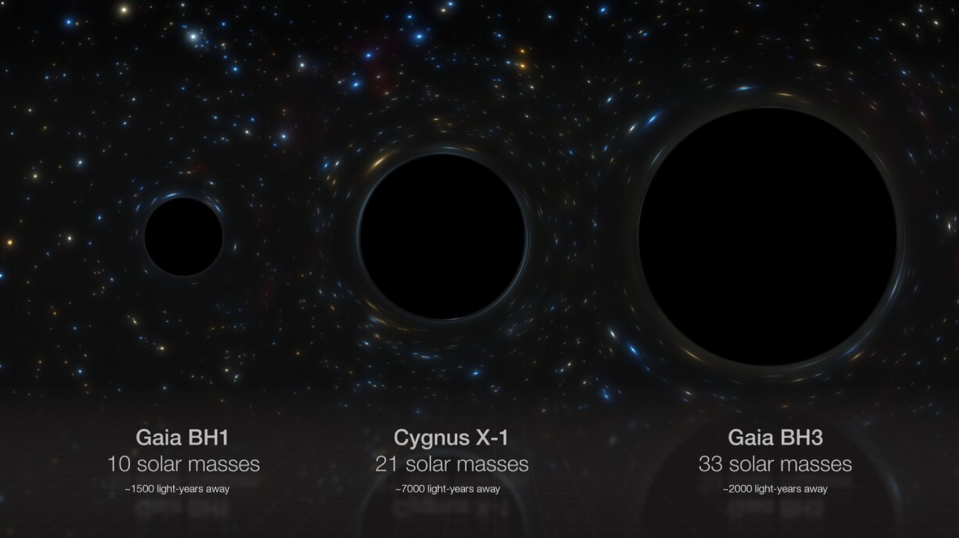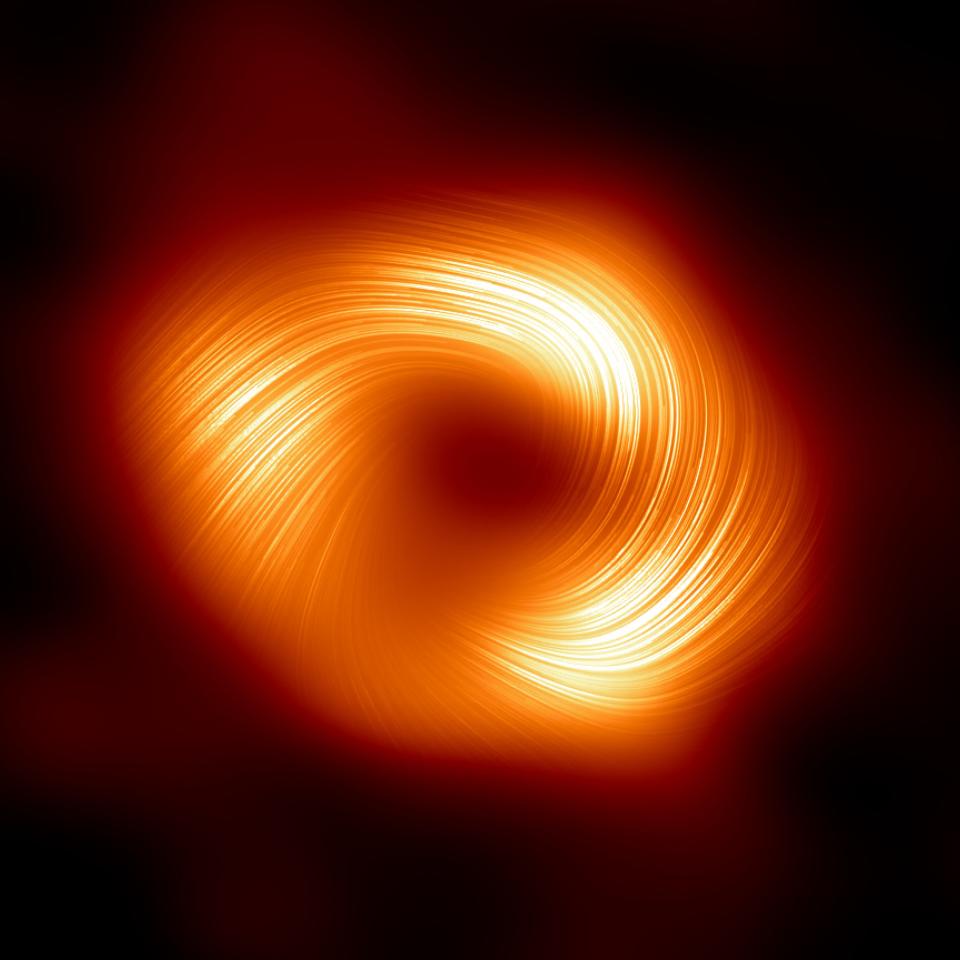European astronomers discover Milky Way's largest stellar-mass black hole: What to know

Until recently, a large black hole formed from a collapsed star was able to avoid detection from the prying eyes of our powerful telescopes – despite lurking nearby Earth and being 33 times the mass of the sun.
But thanks to a little bit of serendipity, European astronomers were able to locate the stellar black hole just 2,000 light years from Earth. Scientists wading through data from the European Space Agency's Gaia mission stumbled upon the discovery of the "sleeping giant," which was fittingly dubbed Gaia-BH3.
Using data from the European Southern Observatory’s Very Large Telescope in Chile and other ground-based observatories, scientists were able to confirm something marvelous about BH3: The object is indeed the most massive stellar-mass black hole yet found in the Milky Way.
Astronomers say the findings, published Tuesday in the journal Astronomy & Astrophysics, challenge our understanding of how massive stars develop and evolve. Here's what to know about stellar black holes and why this discovery is considered so momentous.

Out of this world: From Stanley cups to Samsung phones, this duo launches almost anything into space
Scientists found BH3 while analyzing Gaia mission data
Astronomers divide black holes into three general categories based on mass: stellar-mass, supermassive, and intermediate-mass.
In the case of stellar-mass black holes, when a star with more than eight times the sun’s mass runs out of fuel, its core explodes as a supernova. What’s left behind depends on the star’s mass before the explosion, according to NASA.
Most black holes of this type have only been observed in very distant galaxies, yet this one was found within the Milky Way in the constellation Aquila, making it the second-closest known black hole to Earth, according to the ESA.

BH3 is also the largest black hole of stellar origin ever spotted within the Milky Way, astronomers said.
The discovery came as scientists were analyzing data as part of the the agency's Gaia mission, an astronomical observatory mission with the purpose of creating the largest, most precise three-dimensional map of the Milky Way.
While checking the preliminary data in preparation for next year's release of the Gaia catalogue, researchers stumbled upon an old giant star exhibiting an odd "wobbling" motion. Further analysis of the data led them to a big surprise: The star was orbiting a dormant black hole of "exceptionally high mass," according to the ESA.
BH3 is largest stellar black hole found in Milky Way
As its name suggests, BH3 is not the first of its kind to be discovered.
The European Space Agency announced the discovery about a year ago of Gaia BH1 and Gaia BH2. While these stellar black holes are much closer to Earth than BH3 – just 1,560 light-years away – they aren't nearly as big.
Even what was until now the most massive stellar black hole known in our galaxy, Cygnus X-1, is only about 20 times the mass of the sun, "making this new 33-solar-mass observation exceptional," the European Southern Observatory said in a news release.
“This is the kind of discovery you make once in your research life,” the study's lead author Pasquale Panuzzo, an astronomer and member of the Gaia collaboration at the Observatoire de Paris, said in a statement. “So far, black holes this big have only ever been detected in distant galaxies."
Astronomers hope further study aids understanding of object's 'baffling nature'
Astronomers theorize that stellar black holes form from the collapse of stars with very few elements heavier than hydrogen and helium in their chemical composition.
These metal-poor stars are thought to lose less mass over their lifetimes and hence have more material left over to produce high-mass black holes after their death, according to the ESO.
Stellar-mass black holes can continue to gain mass through collisions with stars and other black holes.
Of course, BH3 pales in comparison to the behemoth that is Sagittarius A*, which has a mass 4.2 million times that of the sun. Unlike stellar-mass black holes, supermassive black holes like Sagittarius A* can grow by eating smaller objects such as gas, stars, planets and even other black holes.

But astronomers still struggle to understand and explain exactly how these types of black holes came to be, especially one 30 times the mass of the sun.
While Gaia wasn't expected to release further results until 2025, researchers said this finding is so exceptional that they felt compelled to reveal it in advance so other astronomers can perform observations of their own.
"The discovery of the Gaia BH3 is only the beginning," the ESA said in a statement. "Much remains to be investigated about its baffling nature."
Eric Lagatta covers breaking and trending news for USA TODAY. Reach him at [email protected]
This article originally appeared on USA TODAY: Milky Way's largest stellar black hole found 2,000 light years away
